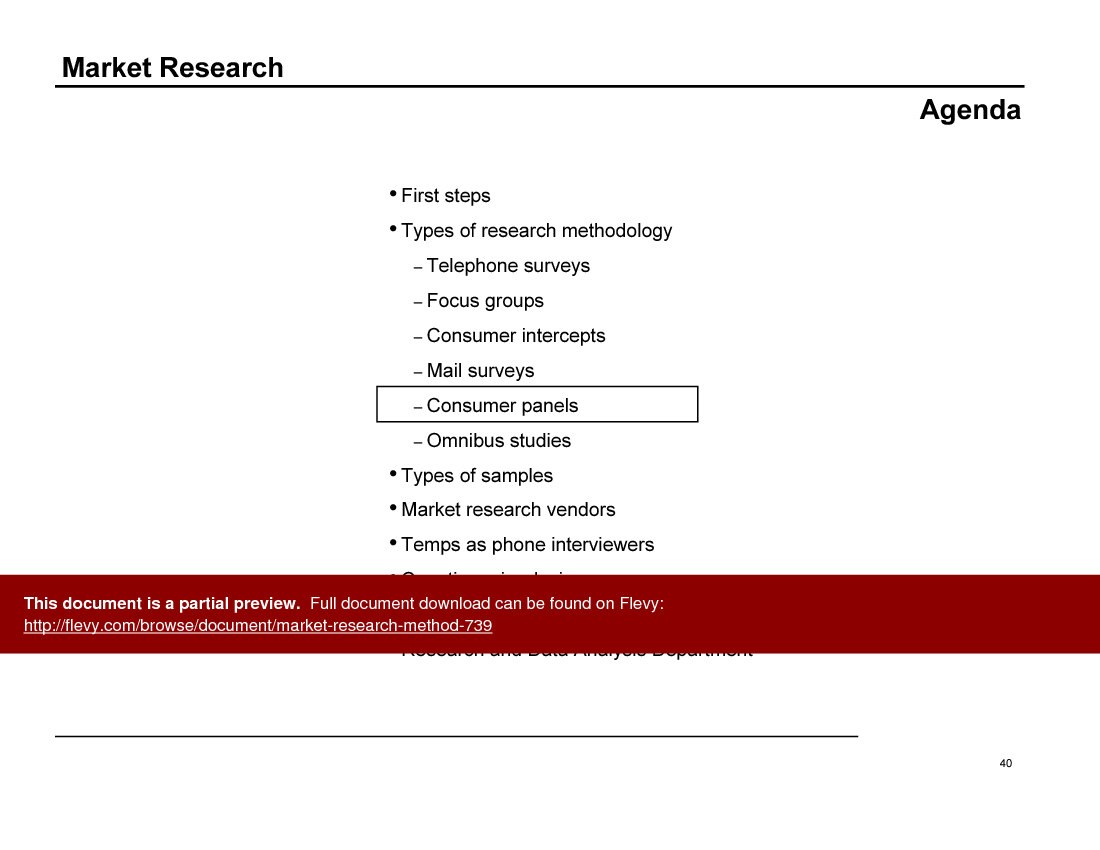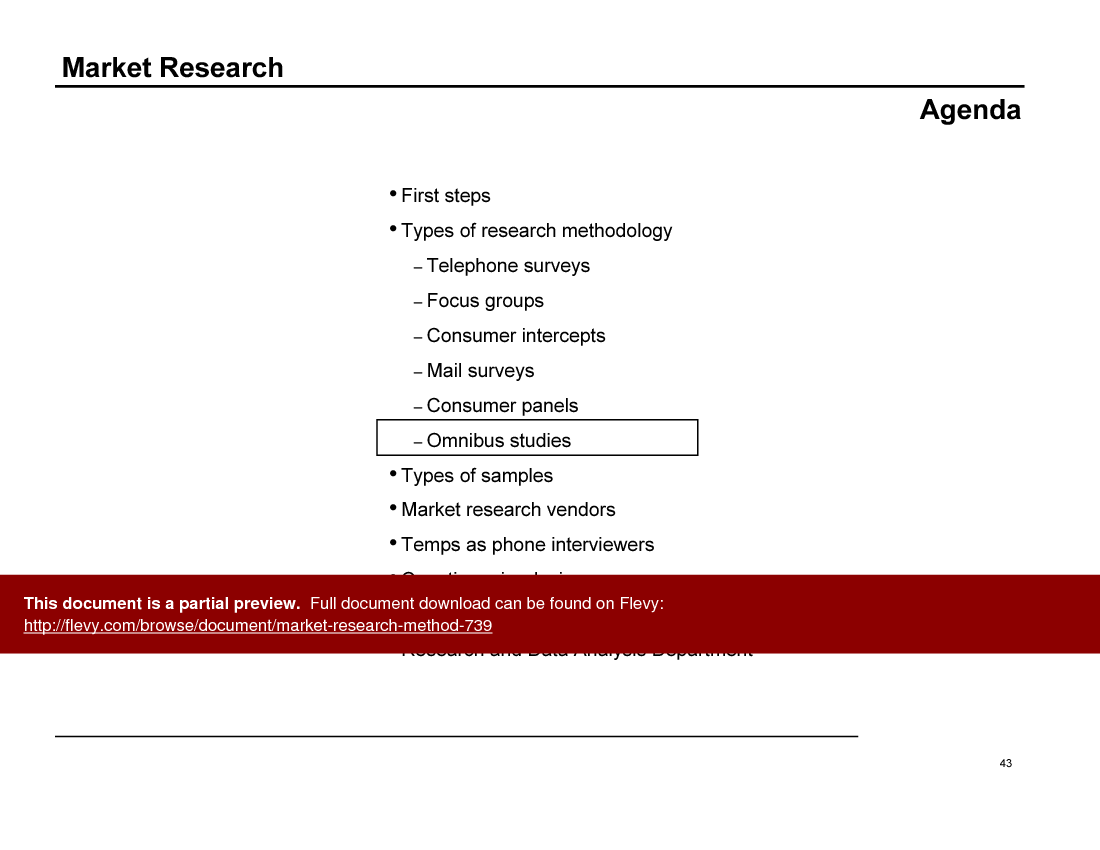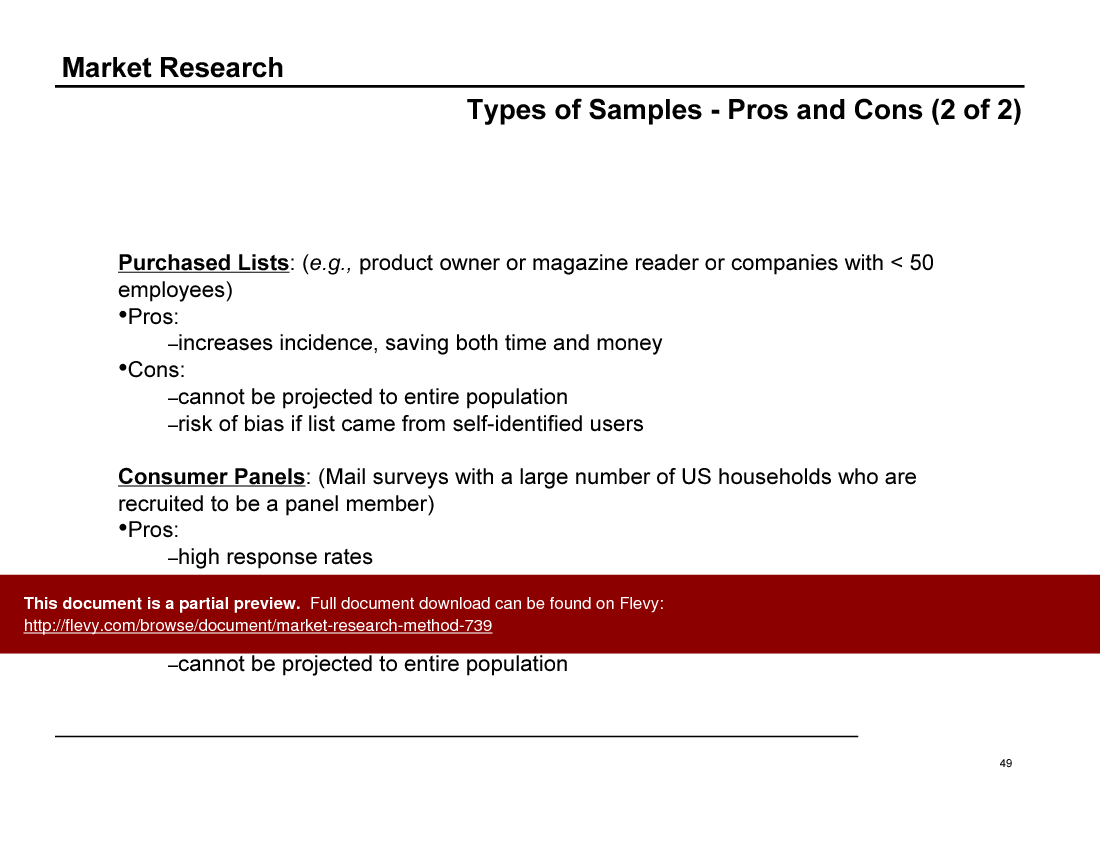Market Research Method (PowerPoint PPT Slide Deck)
PowerPoint (PPT) 109 Slides
MARKET RESEARCH PPT DESCRIPTION
This deck set out a methodology to design and conduct market research. The contents include:
• Overview
• Types Of Research Methodology
• Telephone Surveys
• Focus Groups
• Consumer Intercepts
• Mail Surveys
• Consumer Panels
• Omnibus Studies
• Types of Samples
• Market Research Vendors
• Temps As Phone Interviewers
• Questionnaire Design
• Data Analysis
• Research And Data Analysis Department
This comprehensive presentation provides a structured approach to market research, starting with the essential first steps. It emphasizes the importance of reviewing all secondary research sources before diving into primary research. This ensures that you avoid duplicating efforts and leverage existing data effectively. The deck also guides you on defining specific objectives and the scope of your research, which is crucial for obtaining relevant and actionable insights.
The document delves into various research methodologies, categorizing them into quantitative, qualitative, and combination methods. Each category is explained with practical examples like telephone surveys, focus groups, and electronic focus groups. This segmentation helps you choose the most appropriate method based on your research goals and the nature of the data you need to collect. The pros and cons of each method are discussed, providing a balanced view to aid in decision-making.
A significant portion of the presentation is dedicated to the intricacies of conducting telephone surveys. It compares in-house versus out-of-house options, highlighting the strengths and weaknesses of using market research vendors, case team members, and temps. The emphasis on pre-testing surveys ensures that the final rollout is smooth and effective. This section also covers the operational aspects, such as managing and training temps, ensuring quality control, and handling data entry and tabulation.
Focus groups are another critical area covered in this presentation. It outlines the different types of focus groups and their specific uses, from exploring new ideas to verifying team understanding of questionnaire development. The step-by-step process for conducting focus groups is detailed, including recruitment, moderation, and data analysis. This structured approach ensures that you can gather deep qualitative insights while maintaining a high level of rigor and reliability in your research findings.
Got a question about the product? Email us at support@flevy.com or ask the author directly by using the "Ask the Author a Question" form. If you cannot view the preview above this document description, go here to view the large preview instead.
Source: Best Practices in Market Research PowerPoint Slides: Market Research Method PowerPoint (PPT) Presentation Slide Deck, Documents & Files
MARKET RESEARCH PPT SLIDES
This document is available as part of the following discounted bundle(s):
Save %!
Essential Consulting Knowledge Builder
This bundle contains 21 total documents. See all the documents to the right.


















